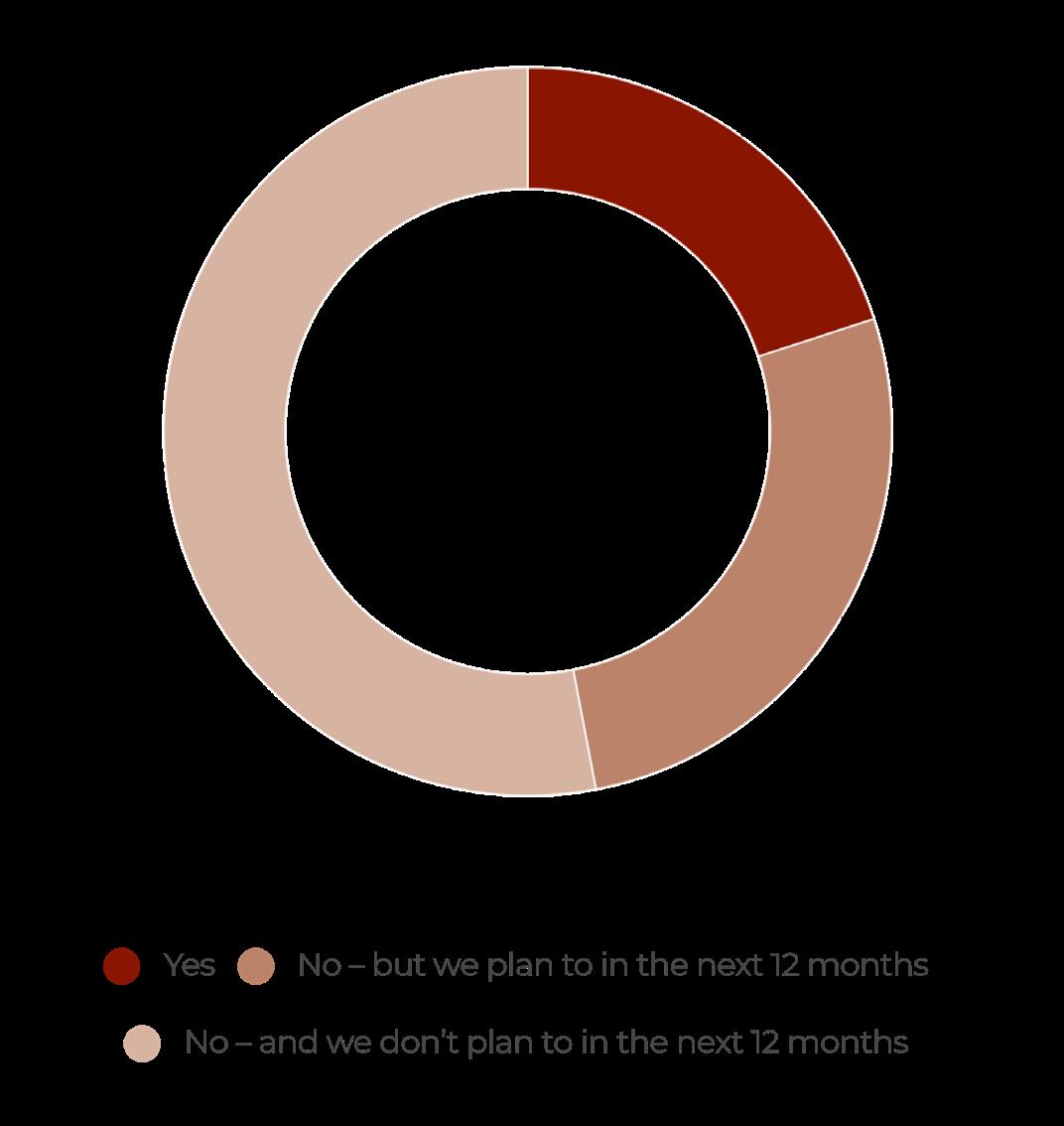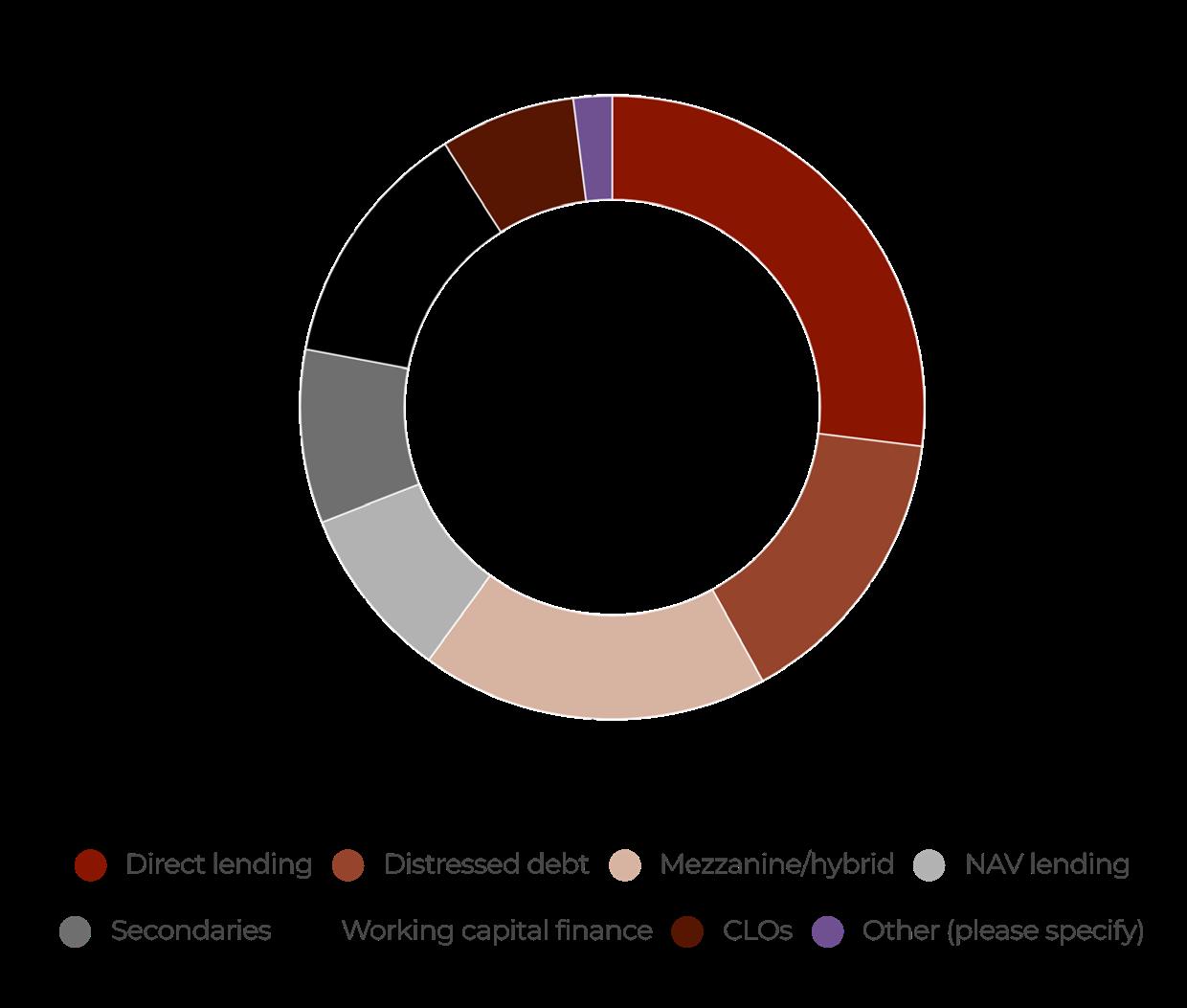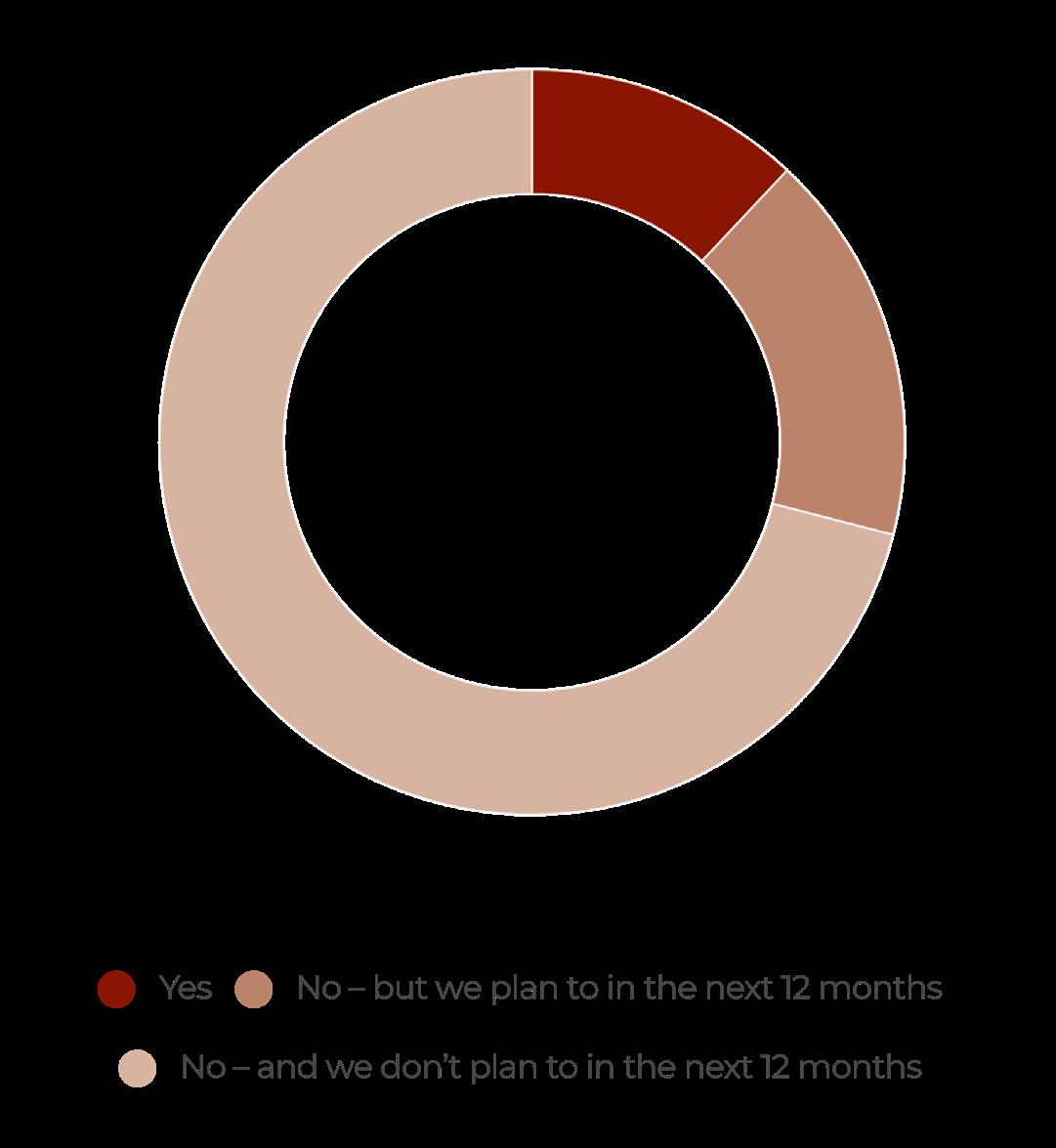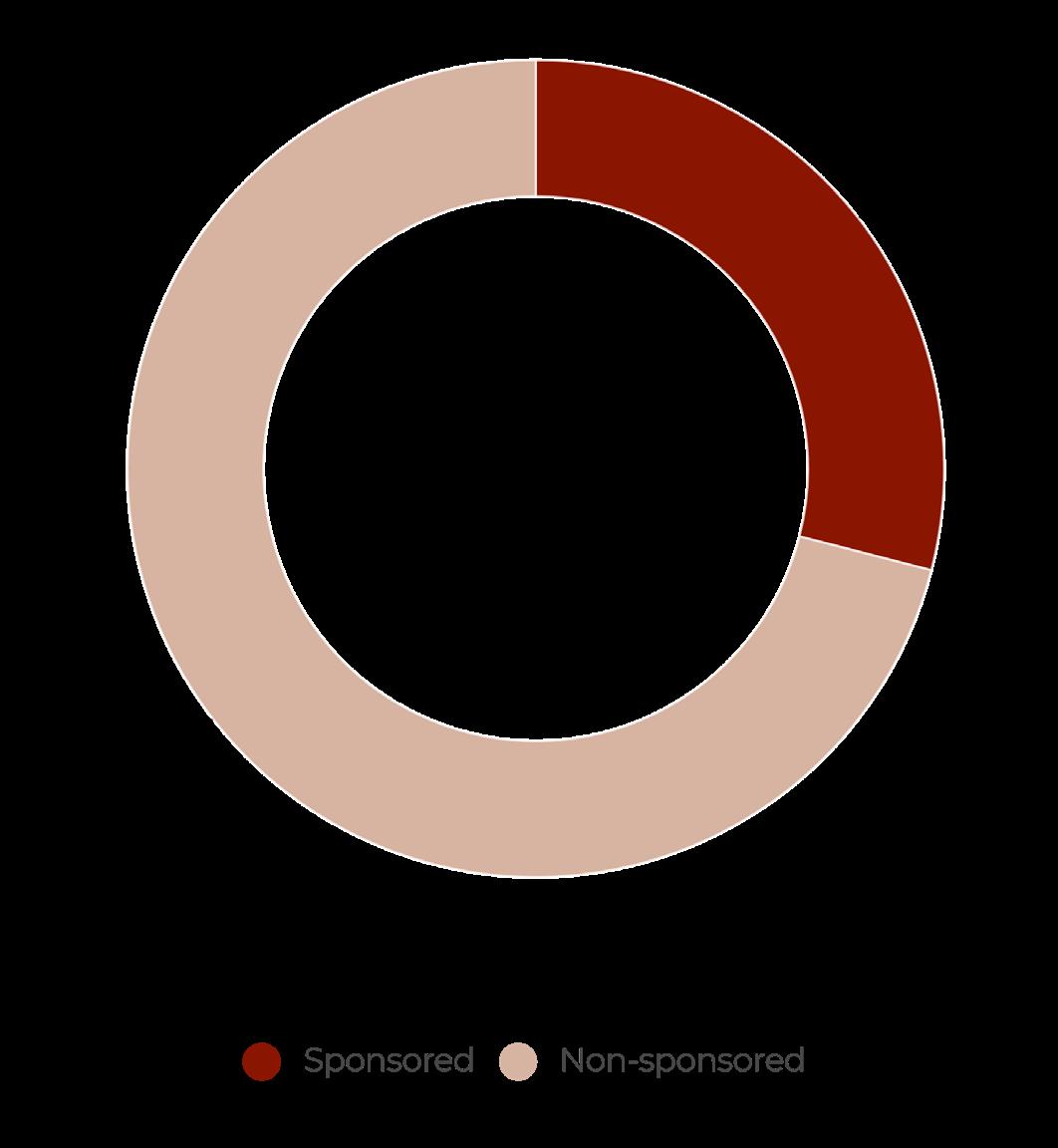




PRIVATE CREDIT IN 2024 AND BEYOND






PRIVATE CREDIT IN 2024 AND BEYOND
It’s the talk of the town, and certain themes crop up in most conversations on private credit.
First, the eye-watering risk return-ratios on offer: reports from The Business Times and the Lincoln European Leveraged Loan Index in February this year found the asset class to be outperforming buyouts and the broadly syndicated loan market respectively.
Leading on from this is the widespread institutional interest in the asset class – the most recent example being Australia’s second largest pension fund, The Australian Retirement Trust, declaring plans to up their private credit allocations. GIC, CalPERS and a range of other major institutions have done the same in recent months.
A more challenging topic to address is the risk of defaults – data opacity in the private markets is making investors and regulators nervous about the quality of loans being made, particularly in a high-speed, competitive lending environment. The EU tightened its oversight in February, while the SEC and the FCA are also reportedly mulling a stricter lending environment.
Speaking of competition, another popular narrative in the media is to pit banks against private credit providers – as the former group looks to edge back into the deal landscape. A Bloomberg report from April cited Bank of America data to reveal $16bn in debt had already transitioned from private funds to the syndicated loan market in Q1 2024.
And underpinning all these narratives is ongoing interest rate speculation – not a new phenomenon by any stretch, but particularly prolific in the current environment.
This report takes a closer look at all these themes. Section one provides an overview of macro-level indicators: What happens if interest rates drop, or don’t? Can portfolio companies sustain the pressure of higher-for-longer? Does private credit really pose a systemic risk? In section two, we explore the finer details of the private credit landscape: new strategies, hybrid models, the interplay between private firms and banks, and how firms can find their competitive edge in an increasingly crowded market.
The data presented in this report is based on a survey of 70+ private markets fund managers. Data was collected in the first quarter of 2024 from respondents with a range of senior job titles, at firms of varying sizes and across geographies. Survey analysis is complemented with qualitative interviews with heads of private credit at some of the world’s largest fund managers, alongside knowledge and insight aggregated from a range of media and news sources.
1 3
Nearly half (47%) of all firms surveyed – across a range of private markets strategies – have either launched a private credit fund in the past 12 months, or plan to do so in the next year. Signs of higher volumes and a more crowded, competitive market are clear, though a far greater share (83%) of larger firms ($5bn+ AUM) have launched a fund recently than their smaller counterparts: 20% of firms with $500m-$5bn AUM, and only 7% of firms with <$5bn AUM.
2
What are the larger forces at play that will impact the private credit landscape in the mediumto long-term? The top three ranked by GPs are: interest rates, deal volumes and investor sentiment. Other factors at play, including banking capital requirements and maturing debt markets, which will continue to create significant opportunities for private lenders, were not far behind in terms of influence.
The most popular lending strategy continues to be direct lending, which made up the majority of deals for 27% of GPs over the past 12 months. Qualitative analysis backs up the preference for low-risk, senior-secured loans. But there are notable hints of diversification: hybrid/mezzanine strategies were in favour for 18%, distressed for 15%, while working capital (13%), NAV financing (9%) and secondaries (9%) were all in the mix.
4
Nearly three-quarters (71%) of all deals in the past 12 months have been non-sponsored – clearly signalling the effect of bank retrenchment and how private lenders are capitalising on the market opportunity. Origination, due diligence, transaction speed, deal structuring and risk management are all being tested in this environment – managers are developing unique strategies to find the competitive edge and scale up effectively.

Are all things still looking up for private credit? A look at all the indicators impacting the industry, from interest rates to risk and regulation
Firmly in the media crosshairs, private credit has split opinion. It is an asset class ripe for investment, most will agree, but a lack of transparency in the industry has raised concerns around its longer term welfare. Credit evolves cyclically, and the bigger picture is textured with nuance on where we are in the cycle, where a firm or investor sits in the market, and wider strategic objectives and expectations.
Optimism persists for a number of reasons. Laura Vaughan, Head of Direct Lending at Federated Hermes Private Credit, says: “We have undoubtedly seen a surge in allocations to private credit over the last 18 months –the sharp rise in interest rates has resulted
in higher yields at a time of rising inflation, allowing private credit to act as an inflation hedge to a certain degree.
“In addition, institutional investors have been drawn to private credit’s potential to offer low volatility, limited correlation to other asset classes, and diversification of exposure to underlying industries. Quarterly cash income also provides an attractive measure of stability for insurance companies and pension funds, which are seeking liability matching income portfolios.“
Private Equity Wire’s Q1 2024 GP survey revealed LPs of varying types have been drawn to the asset class, the core driver being
the elevated interest rate environment, which appears to be a more durable reality than many expected at the turn of the year (see Figures 1.1 & 1.2).
The number, and magnitude, of rate cuts still to come remains subject to speculation, raising the bigger question of what will happen to the private credit landscape if and when rates do eventually dip.
According to Permira’s Head of Private Credit and Co-Head of Permira Credit, David Hirschmann, this is where asset quality comes into play. “Yes, potential cuts will impact yields for lenders, but this will be marginal. A return to 0% interest rates is highly unlikely, and even if base rates fall to 3%, for instance – the yield generated for senior secured loans will present attractive risk-return ratios if the underlying assets are of high quality.
“For those managers that have remained disciplined in their selection of assets –focusing on non-cyclical businesses with healthy profit margins and cash generation –rate cuts will effectively relieve the pressure on portfolio companies and should give them more liquidity headroom.”
Still, rate cuts are a hypothetical for now –the reality looks to be a higher-for-longer environment, which presents its share of risks. Even the most carefully selected assets are likely to feel the squeeze from a high cost of debt in due course.

Larger fund managers are far more active in the private credit space than smaller firms
Share of firms that has launched a private credit fund in the past 12 months
Apollo’s Global Head of Performing Credit, Jim Vanek, says: “We are seeing indications that default rates in both public and private markets are rising. This is unsurprising as rates have now been elevated for two years, which has increased interest expense burdens for floating-rate borrowers in an environment where inflationary pressure persists, which speaks to the importance of credit selection.”
The speed of growth of the private credit industry over the past 12-18 months – with many flooding in and launching dedicated credit strategies (see Figure 1.3) – has brought a competitive edge to the market. Outside of the top-tier funds that are highly selective on assets, looser lending criteria continues to worry market commentators (see boxout).
Some have pointed to wider systemic risks from a potential default spike, though the prevailing view appears to be that a spillover of financial distress is unlikely. FT Alphaville argued just as much in January, citing a comprehensive report from Goldman Sachs credit analysts.
Mark Brenke, Head of Private Credit at Ardian, says: “This is different from highly levered bank balance sheets, where the institutions making loans are systemically important for the market as a whole. Even for the largest funds in the private credit space, a poorly performing loan will impact the manager as well as LPs in a specific fund – the risk of further transmission isn’t comparable to those of banks, for instance.”
...the health of one private credit firm is not reliant on the well-being of others in the market “David Hirschmann Head of Permira Credit and Co-Head of Private Credit, Permira
Hirschmann concurs with the comparison: “Unlike banks, which are exposed to systemic risk due to the interconnectedness and mutual dependence of their health on that of their peers, the health of one private credit firm is not reliant on the well-being of others in the market.”
That said, regulators have taken notice of the industry’s rapid growth. In February, Bloomberg reported that EU governments signed off on a proposal for increased regulation of private credit, which included caps on leverage, among other restrictions.
Hirschmann says: “We’re already quite conservative in the way we manage our funds, and the European private debt market has already been regulated for a number of years. We don’t expect the changes to have a significant impact on the way in which we operate.”
Hirschmann compares Permira’s approach to the wider regional landscape in Europe. “Most senior secured debt investments have a loanto-value of less than 50%, making it unusual for capital to be lost.”
But it’s not just a European phenomenon, established managers worldwide position senior secured debt as their sweet spot. Referencing the macro-economic outlook –including elevated rates and strong economic performance in the US – Vanek says: “We think the opportunity set to lend to bigger businesses
on a first lien, senior secured basis at elevated yields remains attractive. We also believe that strong technicals lower the possibility of a material spread widening even in the near and medium term, absent an exogenous shock to the market.”
Vaughan adds: “Borrower appetite has increased materially for senior secured term debt compared to unitranche, driven mainly by lower costs. As a result, the volume of opportunities has been increasing steadily for senior secured lenders.
“However, with an increase in restructurings, direct lending funds that have introduced aggressive loan structures to cyclical companies will find fundraising increasingly difficult as investors look to back more conservative lending strategies.”
There is far more detail to unpack when exploring the world of private credit – in the next section, we discuss the niches and pockets of opportunity being explored by some of the world’s largest private credit managers.
Indicators remain positive for private credit in the medium-to-long term, though asset selection and stringent terms are crucial to manage downside risk

Managers argue against private credit’s potential to pose a systemic risk, but there are strong arguments for fragility in the asset class too. In April, analysts from the International Monetary Fund published five reasons for more oversight in the space.
First is the size and profile of companies that turn to private credit. As we’ve seen, established private credit players are highly selective with assets, but the majority of borrowers in the space are usually smaller businesses with higher leverage ratios, susceptible to economic fluctuations. More competitiveness also leaves the risk of more leniency in the wider market.
Second is to do with valuations, which are marked quarterly and are less accurate than their traded public counterparts. We go into
more detail with this in the second section boxout. Third, data opacity within the private credit space means there may be “multiple layers of hidden leverage”, which might expose funds, investors and borrowers, though it’s challenging to obtain the full picture.
Fourth is the web of interconnectivity in the industry, which stretches across banks, life insurance companies and other institutions. Closely linked is the final argument, which suggests more retalisation of the credit market may bring about liquidity risks in the future.
All appears under control for now, but the lack of data and transparency in the space makes it difficult to monitor.
Even the most carefully selected assets are likely to feel the squeeze from a high cost of debt in due course “
A look at lending strategies for different risk appetites, the future of collaboration with banks, and how firms can find the competitive edge
Expansion at pace has sparked rampant diversification in private credit. There are new pockets of opportunity for investors of all risk appetites – it’s up to managers to develop the right solutions.
Harriet Steel, Global Head of Clients at Pemberton, says: “While direct lending, opportunistic and distressed strategies have captured the majority of the AUM to date, the asset class is evolving rapidly. The recent and sudden change in the economic backdrop alongside the ever-tightening regulatory environment have combined to deliver two key impacts: longer holding periods for sponsors and increased capital management challenges for banks.
“This has paved the way for adjacent strategies like significant risk transfer and working finance, as well as the emergence of newer
strategies like NAV financing – effectively transferring what have been profits for banks into a diversified source of returns for investors. Managers that can leverage a wider range of strategies to meet investor expectations of tailored, outcome-based solutions that meet specific, diversified risk-return and liquidity requirements will be able to create enhanced value for their LPs.”
Steel’s assessment of the market maps closely to our survey findings: segmenting the deals in the last year by lending strategy, direct lending is the clear winner, accounting for 27% of all transactions, followed by mezzanine/ hybrid structures (18%) and distressed debt (15%). Around 10% each of transactions were also structured as working capital finance, secondaries and NAV lending – hinting at a degree of diversification (see Figures 2.1 & 2.2).


Source: Private Equity Wire GP Survey Q1 2024
Jim Vanek of Apollo says: “As a firm, we are seeing strong demand for hybrid financing solutions, which sit in between traditional debt and equity and generally include some structure and a hybrid cost of capital.
“Hybrid financings – including things like preferred equity and convertible solutions – can be an effective tool to deleverage balance sheets in a non-dilutive manner and bridge companies through to a different rate environment. This sort of liquidity is proving essential for many European companies, and having a proven track record here at Apollo helps us partner with management teams to create these bespoke solutions.”
Among the vast range of driving forces for the private credit market has been bank retrenchment. Damien Guichard, Head of European Private Credit at Allianz Global Investors, says: “In 2022 and 2023, capital markets were largely closed to new issuers, leaving myriad investment opportunities to private credit providers.”
But 2024 has been a year of recovery, raising questions about what the market will look like going forward. Guichard adds: “With capital markets and banks being fully back this year, private credit providers will have to focus on situations where they bring additional value to borrowers, through firepower, structure or process.
“A new equilibrium is to be found between capital markets, banks and private credit providers.” Vanek elaborates on what this equilibrium could potentially look like. “The opportunity to refinance debt originally placed in the public markets, particularly four to six years ago, is a growing theme in private credit.
“Given private structures can incorporate more flexible terms that address a borrower’s unique needs, we’ve seen an increase in demand for private solutions by companies that would have historically borrowed in public markets. Additionally, access to the syndicated high yield and leveraged loan markets is more susceptible to market and interest rate fluctuations.
“We see the expansion of private credit as a long-term secular growth trend functioning as a complement to more traditional sources of credit,” he concludes. Accounting for all active players, spanning corporate credit and asset-backed finance, Vanek places the market opportunity for private credit at a whopping $40tn.
There’s no doubt the private credit landscape is set to grow more crowded, and consequently more competitive. Guichard says: “In the slow M&A market of the last two years, private credit providers have had more time to design and propose more attractive features.
“And while we don’t expect significant acceleration in M&A processes in 2024, we do
Strategy spotlight
Direct lending, mezzanine/hybrid and distressed dominate the credit landscape
Types of transactions completed in the past 12 months 1ST 2ND 3RD
anticipate volumes will pick up and competition between private credit providers will remain intense. In that landscape, the ability to speed up processes in some instances can be an asset.”
Quicker processes will likely be in focus across the deal lifecycle. In ever-evolving macroeconomic landscape and unpredictable interest rate environment mean that credit valuations can fluctuate regularly. Investors will likely demand more transparency and agility, and firms hoping to stay competitive will have to adapt – technology will play a big role here (see boxout). The role of due diligence, agility and transparency are only intensifying as private lenders increasingly side-step sponsors in their transactions (see Figure 2.3).
Another arena of competition will be deal origination. Laura Vaughan of Federated Hermes Private Credit stresses the importance of deal sourcing as a “powerful tool for managing risk and sustaining returns in a challenging economy.”
In another example of how banks and private lenders will co-exist going forward, Vaughan highlights how her firm’s origination approach is built around a series of bank partnerships that provide access to some of the most attractive deals in its preferred segment.
She says: “These partnerships are with the top-three lower middle-market banks in our targeted geographies. The relationships are governed by legally-binding evergreen agreements in which our bank partners are
obliged to introduce us to all transactions they originate that sit within agreed parameters. Our strategy benefits from this right of first refusal, ensuring we are always sourcing high-quality potential loans, rather than seeing transactions turned down by other lenders ahead of us.”
The result, she says, is a healthy pipeline of high-quality, exclusive deals. “Since inception in 2015, we have maintained an investment rate of around 5%.
“A fund manager with a weak origination strategy – and therefore an unpredictable deal pipeline – may find itself forced into certain lending scenarios; accepting weak loan terms or lending to borrowers that have previously been refused by the market, in order to deploy capital. This is where established direct lending funds – with a track record and reputation for speed and reliability of execution – have a significant advantage over recent market entrants or lesser known fund managers.”
Vaughan raises an important point, of how established players in the market have an inherent advantage. Of a similar view is Ardian’s Mark Brenke, who argues that controlling your rate of growth is a critical asset in a rapidly expanding market.
Brenke says: “The few managers that have been around for a long period of time have been able to gradually scale their business, and grow it in line with the market without overstretching themselves. We’re very focused in our strategy, which is mid-market, highcontrol direct lending – experience has taught


Co-Founder and Deputy CEO 73 Strings
Embracing automation and data-driven valuation in private credit
Seldom has the safe, stable world of credit been associated with speed and agility – until now. Private credit transaction volumes have ballooned in the past 18 months or so, on the back of an already steep, decade long incline. And as LPs stream into the market with high return expectations, GPs need to view credit deployments as active, not passive investments.
“Private credit has become a core source of financing for the mid-market, in the US and worldwide, but the current valuation and monitoring process can limit its full potential. Digitiszation offers a solution to streamline the process and improve transparency and speed” says Abhishek Pandey, Co-Founder and Deputy CEO at 73 Strings.
“In an interest rate environment as volatile as right now, impact of this volatility on company’s fundamentals, and risk profile has to be to be taken into account for valuation process and monitoring on almost real time basis. The challenge for GPs is that monitoring these valuations is an overwhelming task when
faced with current lending volumes in current environment – we are no more in a near zero interest rate environment and traditional approach of roll over at costs without adjustment from one quarter to the next is not working anymore.”
LPs demand a more robust approach, particularly as they grow more stringent with their investments and liquidity is increasingly in focus, says Pandey. They need to know exactly where they stand at all times, putting compliance, governance and transparency in the spotlight.
He says: “Even more so on the credit side than in equity, GPs are having to conduct frequent valuations – sometimes on a weekly or monthly basis. The conventional method is cashflow-based, for which analysis is done at the securities level. The challenge is, the process of running models for every individual security – volumes being high – is time consuming, rigid and fraught with risk of human error. The fallout can be seriously damaging for LP relationships.”
Data is core
Pandey points out how software today use AI to bring all the unstructured data into structured
format. “Managers engaged in valuation and monitoring can click into the platform and instantly access a company’s financials, compliance certificate, and other key information.
Data collection to valuation, everything is structured and streamlined so the role of the GP is just to apply human judgment, not collate the information. The result is a more efficient, cost-effective and risk-mitigated valuations and monitoring process as a whole.”
And there is value to be added to decisionmaking a cross the investment life cycle. “GPs have to make a number of strategic decisions when it comes to fundraising, deployment and valuations. Once all the data is gathered and structured in one place, it becomes possible to overlay analytics and artificial intelligence (AI) to produce extra insight – such as pricing, or exit timing, for instance – on both existing and new investments. Everyone wants to use AI, but the first step is to structure data correctly.”
Firms that leverage software in this way are not only better equipped to manage higher volumes, but they gain a strategic advantage and stand to improve their relationship with investors.
Investors will likely demand more transparency and agility, and firms hoping to stay competitive will have to adapt –technology will play a big role here “

Source: Private Equity Wire GP Survey Q1 2024
us this is the best way to manage downside risk. With that in mind, we have refrained from engaging in the post-Covid rush where private credit has been competing for upper midmarket or large cap assets, filling the gap left by the syndicated loan market.
“We’ve certainly continued to expand, but our size and scale has allowed us to ensure our platform develops relative to the market opportunity – maintaining our focus on quality over quantity. It becomes more challenging for new managers that have to scale up relatively quickly to compete in the market.”
Having a clear plan is crucial to competing in a crowded private credit market, whether that’s a strategic focus, a healthy deal pipeline, or a tech-driven edge
A new equilibrium is to be found between capital markets, banks and private credit providers “Damien Guichard Head of European Private Credit, Allianz Global Investors
CONTRIBUTORS:
Aftab Bose
Head of Private Markets Content aftab.bose@globalfundmedia.com
Johnathan Glenn
Head of Design johnathan.glenn@globalfundmedia.com
FOR SPONSORSHIP & COMMERCIAL ENQUIRIES:
Enrique Schindelheim
Business Development Manager enrique.schindelheim@globalfundmedia.com
